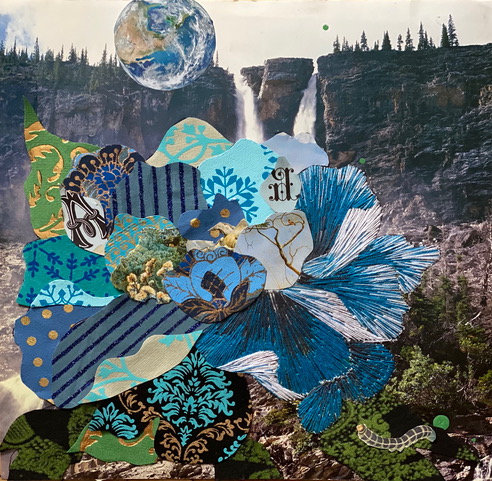Crafted Objects Carry Meaning
Main Article Content
Abstract
This article delves into the aspects which contribute to the creation of an object’s itinerary or life story. In the case for crafted objects this includes material history, maker-object relationships, and the historical narratives surrounding craft practices. The story of crochet samples is related through visual life writing and poetry, to highlight the agents active in the ‘creation’ of objects, as well as the pedagogical potential of undesirable outcomes within craft making and learning.
Keywords: Craft; Material; Human-Object Relationships; Poetry
Downloads
Article Details

This work is licensed under a Creative Commons Attribution-ShareAlike 4.0 International License.
The copyright notice is CC BY SA.
This license lets others remix, tweak, and build upon your work even for commercial purposes, as long as they credit you and license their new creations under the identical terms. All new works based on yours will carry the same license. Thus any derivatives will also allow commercial use. For example, if someone translates your article into French, the French version of the article will also have to be shared under a CC BY SA license.
References
Bauer, A. A. (2019). Itinerant objects. Annual Review of Anthropology, 48, 335–335. https://doi.org/10.1146/annurev-anthro-102218- 011111
Flower, C. (2016). Wilful design: the sampler in nineteenth-century Britain. Journal of Victorian Culture, 21(3), 301–321. https://doi.org/10.1080/13555502.2016.1195765
Garber, E. (2019). Objects and new materialisms: a journey across making and living with objects. Studies in Art Education: A Journal of Issues and Research in Art Education, 60(1), 7–21. https://doi.org/10.1080/00393541.2018.1557454
Henri, R. (2019). 6 Samples in Tunisian crochet [crochet]. https://rachelhenri.com/en/dont-trust-yarn-labels/
Hood, E. J., & Kraehe, A. M. (2017). Creative matter: new materialism in art education research, teaching, and learning. Art Education, 70(2), 32–38. https://doi.org/10.1080/00043125.2017.1274196
Maurice Brassard Fils Inc. (n.d.). http://www.mbrassard.com/index-ang.html Page, T., & Thorsteinsson, G. (2019). The Significance of practicing craft in the modern society. I-Manager's Journal on Educational Psychology, 12(3), 1-12. https://doi.org/10.26634/jpsy.12.3.14662
Ruddel, D. T. (1983). The domestic textile industry in the region and city of Quebec, 1792-1835. Material Culture Review. https://journals.lib.unb.ca/index.php/MCR/article/view/17159
Turney, J., O. (2012). Making love with needles: knitted objects as signs of love? Textile: The Journal of Cloth and Culture, 10(3), 302–311. https://doi.org/10.2752/175183512X13505526963949
Tweddle, M. (1897). Crochet corner sampler [needlework]. Victoria and Albert Museum, London, England. Sample | Unknown | V&A Explore The Collections (vam.ac.uk)
What is Life-Writing by The Oxford Centre for Life-Writing at https://oclw.web.ox.ac.uk/what-life-writing. Accessed on May 14, 2024

